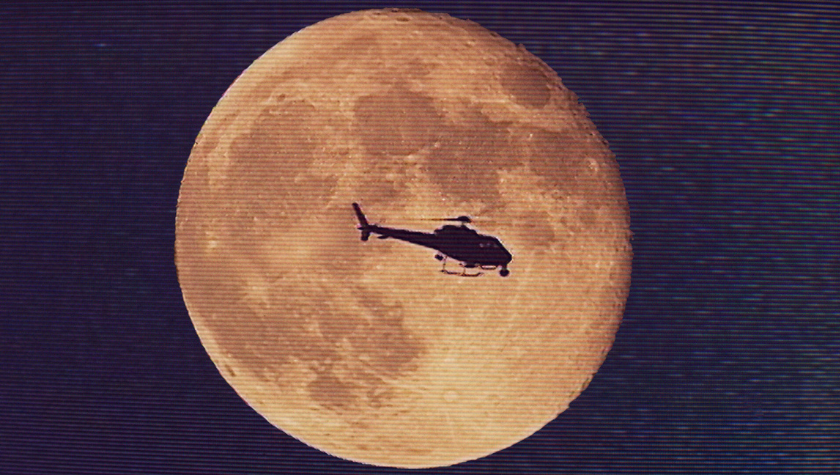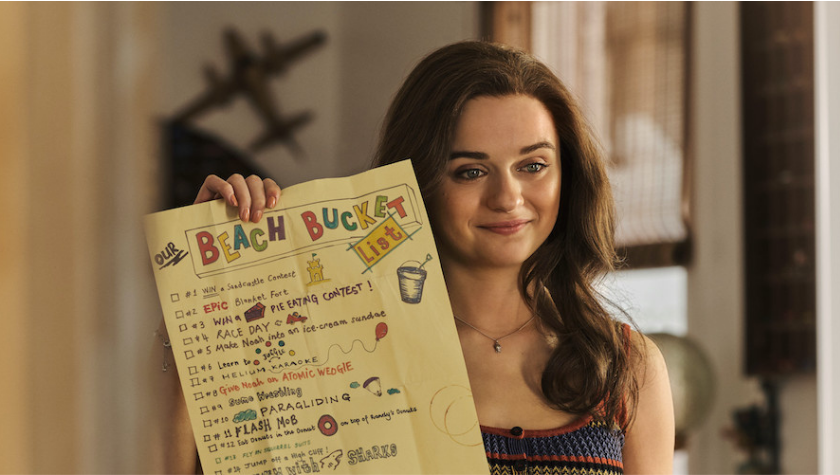Writer-director Heidi Ewing combines documentary, scripted film to tell real-life love story in 'I Carry You with Me'
July 6, 2021
Caught between his memory and dreams, Iván (Armando Espitia) looks out the train window in a flurry of thought. In an instant, I Carry You with Me (Te Llevo Conmigo) flashes to a time years before; he is 25 years old and caught in the rush of New York City, delivering food out of a restaurant. Iván is there in hopes of pursuing his dream of being a chef, having left behind family and romance with a man by the name of Gerardo (Christian Vazquez), who stole his heart with one laser point in his direction.
The film blends cinéma vérité and scripted flashbacks to portray a real-life story of a queer, undocumented immigrant looking for his place in the world while carrying each bitter and sweet memory he holds close of his upbringing in Puebla, Mexico.
As the worlds of documentary and scripted film collided, writer-director Heidi Ewing made sure they flowed into each other by allowing the styles to intermix.
"In the scripted part there is a stylistic nod to documentary, and then in the documentary part I tried to make it as cinematic as possible, even though it's fly-on-the-wall material," she said.
Together with co-writer Alan Page Arriaga, Ewing created what she described as a feat that isn’t well known to many. To ensure that people understood how the two spoke to each other in the narrative when pitching the film, she differentiated the two styles in the script by color.
"If you were reading it in blue, you knew that that's a documentary scene that's already been shot," she said.
"It was very unorthodox. No one had ever seen that before."
Even in the filming process, Ewing had to be specific with what happened between the jumps in time as Iván aged from 10 to 25 to his forties. She worked with the actors to ensure that they understood how each scene flowed into the next. The process even extended into the edit.
"When you get to the edit, things are gonna surprise you," Ewing said.
"So it was really trying to figure out where the shifts in time would happen, because the movie is elliptical."
As complex as the story can get when it swings from time frame to time frame, Ewing was able to verify information by going back to the source: her friends. The story is based on her friends with the same names as the leading characters. They met in 2006, and one night after the premiere of her film Detropia in 2012, they poured out their love story to her. She pursued their story as a potential film, documenting their lives from 2012 to 2013 and drafting the scripted sections off and on in the following years with Arriaga. The collaborative work led to the film’s premiere at Sundance in 2020.
Working with friends meant that she had to set boundaries on when it was time to socialize and when it was time to get to work.
"We developed a language that was like, today we're just friends and then today I'm talking to the director and writer, because you had to really differentiate," Ewing said.
One of the bright sides to working with her friends was being able to get deeper into the details.
"If I would get stuck in the writing process, sometimes I would just get in a car or the subway and I'd go over to one of the restaurants and sit at the bar with them and say, 'Tell me that story again,'" she said.
Working on the scripted narrative was new to Ewing; I Carry You with Me is her first scripted film. It was an opportunity to start from scratch when crafting the narrative of the couple’s love story over the documentary footage.
"You can control the pace and the dialogue and every single thing about it," Ewing said.
"And so that was really fun for me as someone who's always having to sort of react to what's in front of me in nonfiction."
I Carry You with Me highlights the specific experiences of two lovers trying to make their dreams a reality. Tugged back by machismo, homophobia, and the barriers of being an immigrant, Iván and Gerardo push forward to make a life for themselves in the U.S. As promising as the change seems, there are still limitations that leave the viewer questioning what will happen next to grasp onto the next dream they hold close.
As Iván and Gerardo peer through the train window, caught between memory and dream, they remember that hope is what makes each step forward worth it.
"I want people who see this film to take away a message of hope," Ewing said in a press release.
"I want them to see that those of us who migrate here from other countries in search of opportunity are good people and we have much to offer. We have love to give and we work so hard to turn our dreams into reality."
Written by: Steven Vargas
Steven Vargas is a multimedia journalist based in Los Angeles whose work focuses on arts, entertainment and activism. He is a current grad student at USC Annenberg pursuing an MA in Specialized Journalism (The Arts) and previously graduated from USC with a BA in Theatre and Journalism with a minor in Dance. He is a current member of the Equity Board, a new initiative at Annenberg Media dedicated to diversifying sourcing and promoting inclusive coverage across the publication. His short doc, “Dancing at Home,” earned first place in the LA Press Club’s “Life in the Time of the Coronavirus Contest" in May 2020. More recently, he co-directed "Two Paths: One Direction," an award-winning short documentary produced with students from the USC and Prairie View A&M University about their experiences of 2020. He produced work for ET Live, TheWrap, Dance Magazine, BuzzFeed News, and more. His work can be found here: https://www.vargassteven.com/



